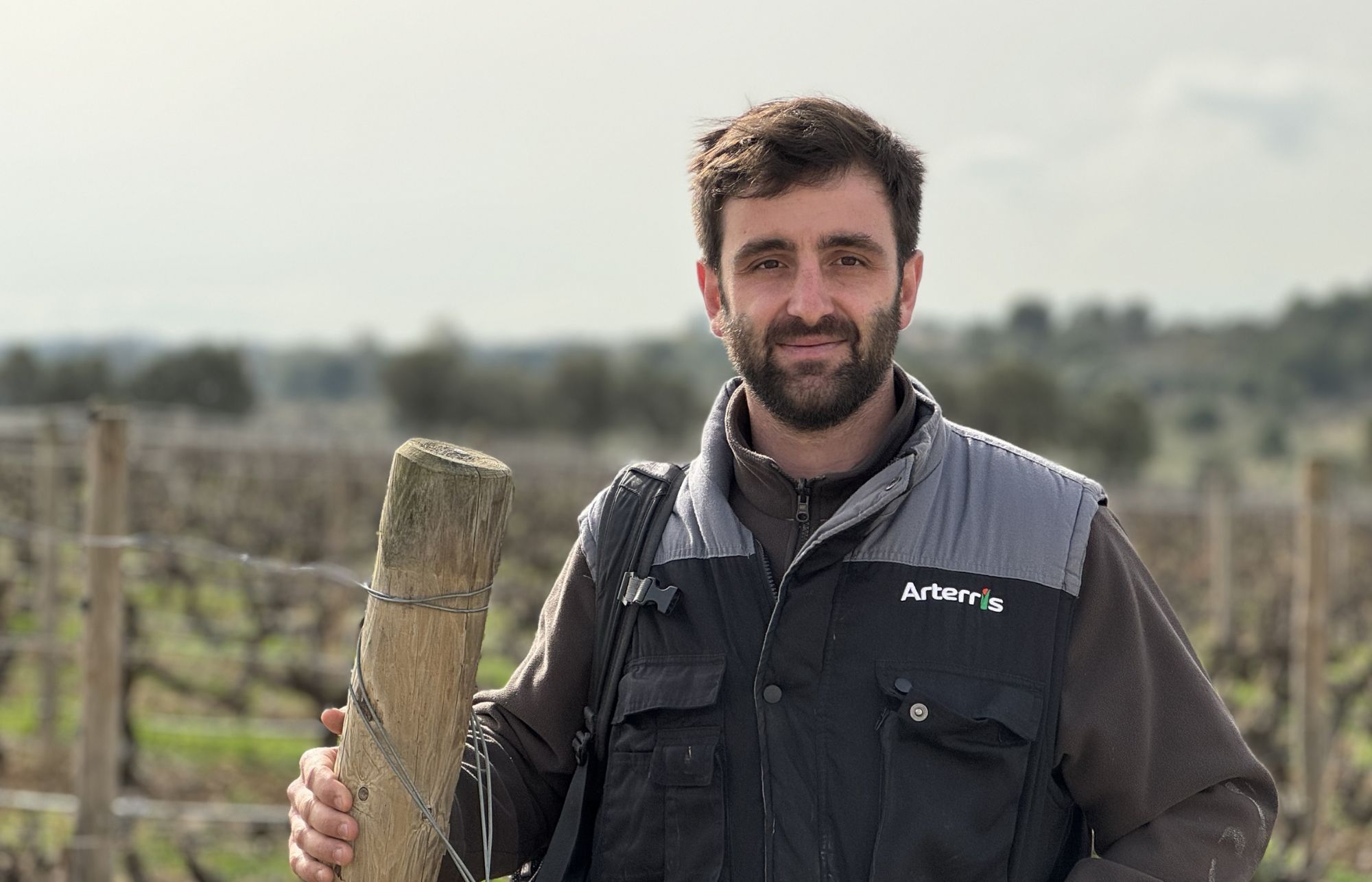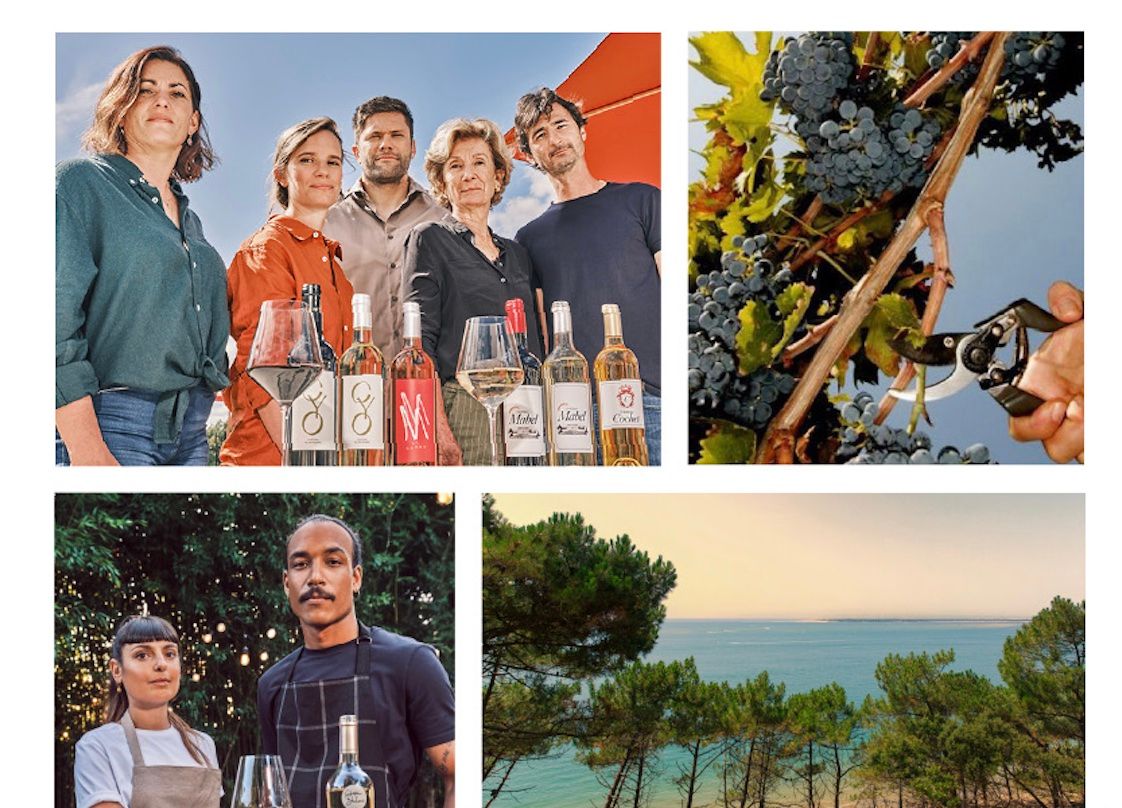“In the old days of Bordeaux the chateaux were owned by families and they had individuality but now everyone’s been to the same wine school, had the same professors, use the same tanks, there’s a technocracy in Bordeaux where it all ends up tasting the same – it becomes very boring.”
Peter Sisseck is a man with several missions: to start making ‘Spain’s greatest white wine’ in Jerez; to continue making one of Spain’s greatest reds in Pingus; and today, at a showing of the vintages he’s made at Château Rocheyron since 2010, he wants to get the wine world to take stock and re-evaluate Bordeaux and what it was that made it “the greatest wine region for producing wines to age in the world.”
One of the finest winemakers of a generation, Sisseck is as passionate as he is honest, talking at length to a packed room at Corney & Barrow’s London head office with six of the vintages he is most proud of from his Saint-Émilion estate.
“But these are crazy times – coming from Bordeaux is almost a liability,” he says when recounting the trouble he had to gain biodynamic certification in France.
“Since 2015 we have worked in the vineyards applying biodynamic farming, and this year have been accepted by the biodynamic association in France, but it is difficult because we make a Bordeaux wine. If you come from Bordeaux you are like a Nazi to them.”

“As a winemaker it’s annoying because you have to make it forward and understand it backwards – it took me a long time to understand what I am doing.” Peter Sisseck, Château Rocheyron
Sisseck did get the certification, allegedly by the highest-ever margin vote in the association’s history, and continues to prove how biodynamic farming lies at the heart of his wines’ greatness and their consistency.
“What is interesting about a vineyard in balance is the regularity of the wines – we have seen this with Pingus – the level of consistency of the wines. And they are not heavily influence by vintage characteristics – each one is an interesting wine but it’s the hallmark of a great vineyard that it is not affected too much by vintage. If you can make good wine in a so-called bad vintage then it’s a sign of good terroir,” Sisseck says modestly.
He adds that when the frost of 2017 hit Bordeaux “it was all the great terroirs that were least affected by it.”
“We heard horror stories how in Bordeaux – being wet and humid – it could be a problem, but we have not had any problems not even in 2018. Palmer achieved 8 hectolitres per hectare in 2018 and Pontet Canet 10 hectolitres but we made 30-35 hectolitres which is what we aim for.”
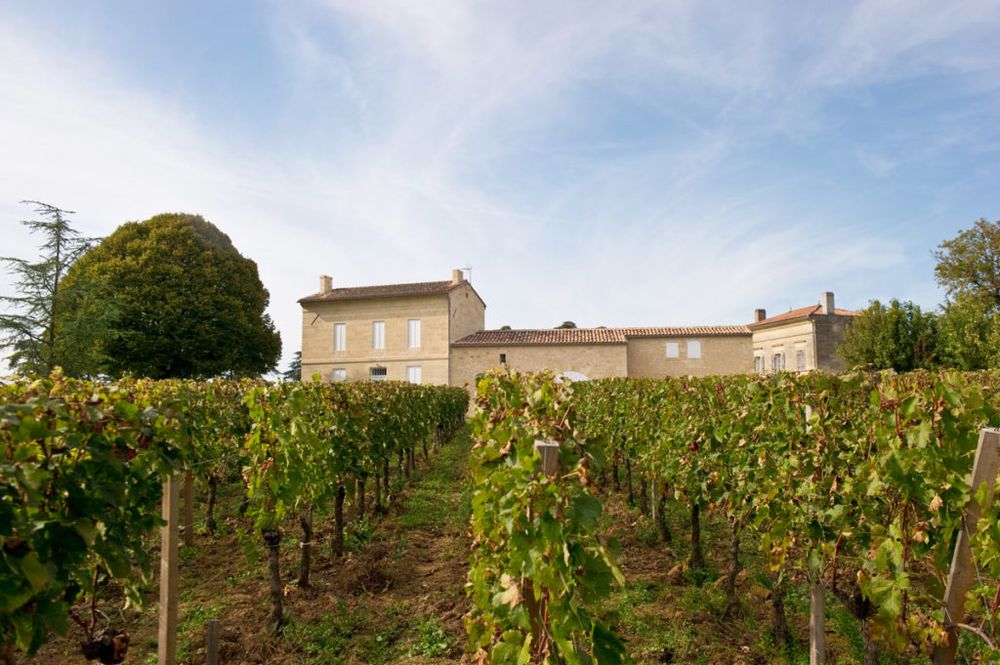
“The line between all three properties of mine is limestone. I only make wine from limestone.”
When Sisseck and Rocheyron co-owner Silvio Denz (Château Faugères) bought the property in 2010 it was the quality of the 8.75 ha of vineyards that first attracted them – most of the Merlot and Cabernet Franc lying on Saint-Émilion’s prized limestone plateau.
“We all know about the deserts of the Medoc – no tree in sight – but Saint-Émilion is hilly and probably has the most interesting soil. There are three soil types: gravel soils close to Pomerol, limestone up towards and around the town, and then the slopes. But people had forgotten about the land – not the best vineyards – and had to work hard at it in early 90s.”
Sisseck concedes that it is limestone soil that is the common characteristic behind all of his wine projects, that and also working with an ‘unknown’ property in a region with great tradition.
“The line between all three properties of mine is limestone. I only make wine from limestone so I guess the next would be Chablis or Champagne but I hope not.”
“I have always wanted to find a chateau that hasn’t been discovered within areas that have a great tradition. So Pingus was created from nothing, Flor de Pingus was created from nothing. Psi was created from nothing. The same with Hacienda Monasterio.”
His next project is in Balbaína, Jerez, where he has bought a pago with his business partner Carlos del Río González-Gordon, a member of the family which owns González Byass and co-proprietor of Hacienda Monasterio, the Ribera del Duero bodega where Sisseck lives and is the oenologist. Sisseck wants to make ‘Spain’s greatest white wine’ a Fino from Palomino grapes, although he is taking more of a back seat initially in a region where he does not have winemaking experience.
Bordeaux, on the other hand, is the region where he first cut his teeth at Château Rahoul and Château de Landiras working with his uncle Peter Vinding-Diers.
“When I started I worked with my uncle in the Bordeaux region, I started in the vintage of 1983. 1982 had just been launched which was perhaps the most important ever vintage that changed the wine world.”
“1982 Mouton Rothschild was the first barrel sample I ever tasted and I still remember that vintage – it became my reference point. The vintage also gave birth to the infamous but then unknown Robert Parker, Michel Rolland and numerous buzzwords.”
“But at the time Bordeaux had emerged from a big crisis – it wasn’t easy selling Bordeaux, the properties were run down, people were living in their kitchens with no money to restore their chateaux, there certainly were no new barrels. And 1982 was made in a way that people do not do any more. Michel Rolland at Le Bon Pasteur, for example, had no money – so 30% of his barrels were new, 30% were from the second wine and rest was in tank. In those days it was the best wine he made.”
Sisseck says that the scale of the 1982 vintage was also a key factor. Pichon Lalande was achieving 58 hectolitres per hectare, for example, and there was an acute shortage of tanks. “People would stop trucks carrying tanks into Bordeaux, and pay the driver for them, we heard lots of crazy stories like that.”

“The increasing standardisation of vineyards is a worldwide problem,” Peter Sisseck, Corney & Barrow head office, London 14 Nov, 2019
It was his experience in Bordeaux which made Sisseck want to move to Ribera del Duero in the first place – to Hacienda Monasterio and then to establish Pingus. He describes it as “a detour in Spain for a number of years… I had a bit of an idea on how to cope with high alcohol and sugars, which helped me make wine in a ripe expression.”
Sisseck’s last vintage in Bordeaux was in 1990 before his return with the 2010 vintage at Rocheyron. In the intervening years he has witnessed what he sees as one of wine’s greatest problems – the standardisation of wine.
“In the old days of Bordeaux the chateaux were owned by families and they had individuality but now everyone’s been to the same wine school, had the same professors, use the same tanks, there’s a technocracy in Bordeaux where it all ends up tasting the same – it becomes very boring.”
He gives as an example how conventional farming can lead to this homogenisation.
“A lot of people in Bordeaux think it mandatory to spray anti-rot. But that gives you two problems, for a start the grapes ripen 7-10 days later but far worse is that the anti-fungal kills the yeast on the grapes and then you have to add yeast in the cellar. And one of the biggest problems when you buy yeast in a bag is that it is very difficult to make wine different from your neighbour – it’s part of a worldwide problem… the increasing standardisation of vineyards.”
“You see people using the same machinery, de-stalker, the same clones, the same yeasts – all the basic ingredients are the same, and all the wines start tasting the same – so how do you differentiate yourself?”
For Sisseck that challenge starts with finding a first rate site with great potential and then farming biodynamically and getting to really understand each vine as an individual.
“One of the most important things I’ve learnt over time is pruning – to really understand each plant and treat each one as an individual and to allow each to have the exact amount of vegetation which is one of the best and easiest ways to get grapes to ripen at the same time.”
“We also try to aerate the vines as much as possible – I see a lot of vignerons stripping all the leaves off thereby getting more colour and tannin but you burn off the aromas and the wine is not as interesting. We don’t do that, we keep a certain amount of shade. Great Saint-Émilion should have perfume, the tannins should be really integrated. We work with low PHs. And if you have very high tannins and low PH the wine will come out hard and square.”
“Aeration helps avoid disease so we don’t let the grapes touch each other and we don’t do green harvest, we tend to adjust the vigour of the vines which we regulate with home-made compost.”
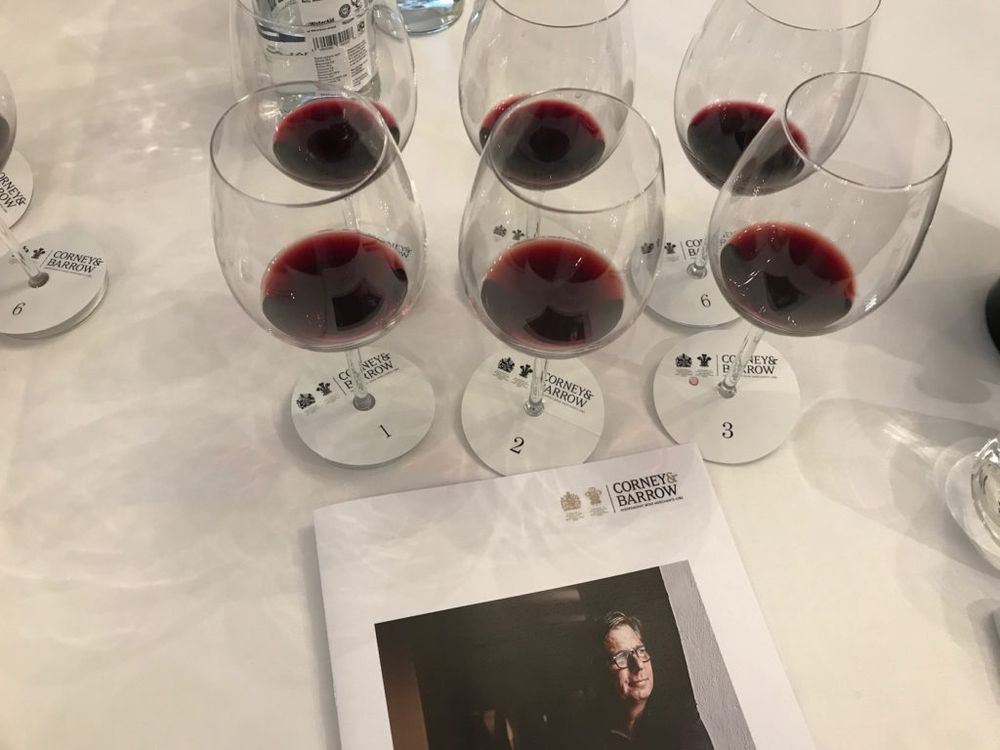
“As a winemaker it’s annoying because you have to make it forward and understand it backwards – it took me a long time to understand what I am doing.”
“If you have a better balanced vineyard you are less affected by disease, you have to be proactive and work on prevention, in much the same way that as a human if you look after yourself you are less prone to disease. With a good balance you don’t use fertilisers and have active and microbiological life in the vineyard, it is not sterile. So, for example, you create competition between fungi so one doesn’t take over and become established.”
Sisseck confides that he does still spray copper sulphate – 2 kilos per hectare per year – although this is modest compared to how Bordeaux used to be farmed with each hectare having 144 kilos of copper sprayed per hectare per year.
“When I started in Bordeaux in 1983 there were a lot of storms and a lot of disease. We did 16 sprays using 9 kilos per hectare each spray, now it is 2 kilos per year. It is difficult to get around this copper thing – it is the best thing against mildew.”
Sisseck confesses to being a constant experimenter, and never tiring of trying new things. At Pingus he has six discarded amphorae on account of him not being impressed with the results, he has also looked at 600 litre barrels “But I was not so impressed with the tannin structure, although I use them in Spain for Psi – everything is in big wooden tanks.”
His wood regime is also 100% new French oak for ageing although the wines in Saint-Émilion are first vinified in unlined cement tanks.
“Some use 50/60% new oak but we do 30% – it allows the wine to evolve but does not mark it too much.”
Another change he has noticed is how wine never used to totally dominate people’s lives as it can do now.
“Wine shouldn’t be everything, it’s an important part, but shouldn’t be everything. It is important to read a book and look at art. I find now that a lot of people talk about wine and nothing else which is ultimately very boring.”
And so onto the tasting

Sisseck chose to show Château Rocheyron 2012, Saint-Émilion, followed by the 2014-18 vintages. 2010 was his first vintage there and does not show the changes he made. In 2013 he made the second wine only and none of the grand vin.
“2010 was a fantastic vintage but it was OK for us not great. The vineyards had not been ploughed for many years and treated with herbicides, and the roots were near the surface. It was a warm year the first sign of global warming. 2005 was a warning then, but with 2009, 2010 and 2015 you clearly feel that something is happening – it is warmer weather.”
“But the limestone plateau is a very good regulator of humidity. It produces some of the greatest and well-known wines of Bordeaux.”
Château Rocheyron 2012, Saint-Émilion
Mature aromas, slightly savoury nose, classic, ripe, nice evolution, just starting to drink, lovely and fresh, sensual, rounded with wonderfully integrated tannins. “What I am going to have for Christmas,” says Sisseck.
Château Rocheyron 2014, Saint-Émilion
Not over-ripe. More tannic structure and more stern tannins than 2012. Harder, more tense, more character, inkier. There was no Cab Franc used as it was out of balance.
Château Rocheyron 2015, Saint-Émilion
The first great vintage made after 2010 which is rounded, elegant and slightly ‘thinner’ than 2014. “The one tiny problem is that we cropped too high (40 hl per ha) and it does show a bit. The wine came out on the ‘easy’ side, it is very elegant but maybe too much, it’s like 2012 on steroids,” says Sisseck.
Château Rocheyron 2016, Saint-Émilion
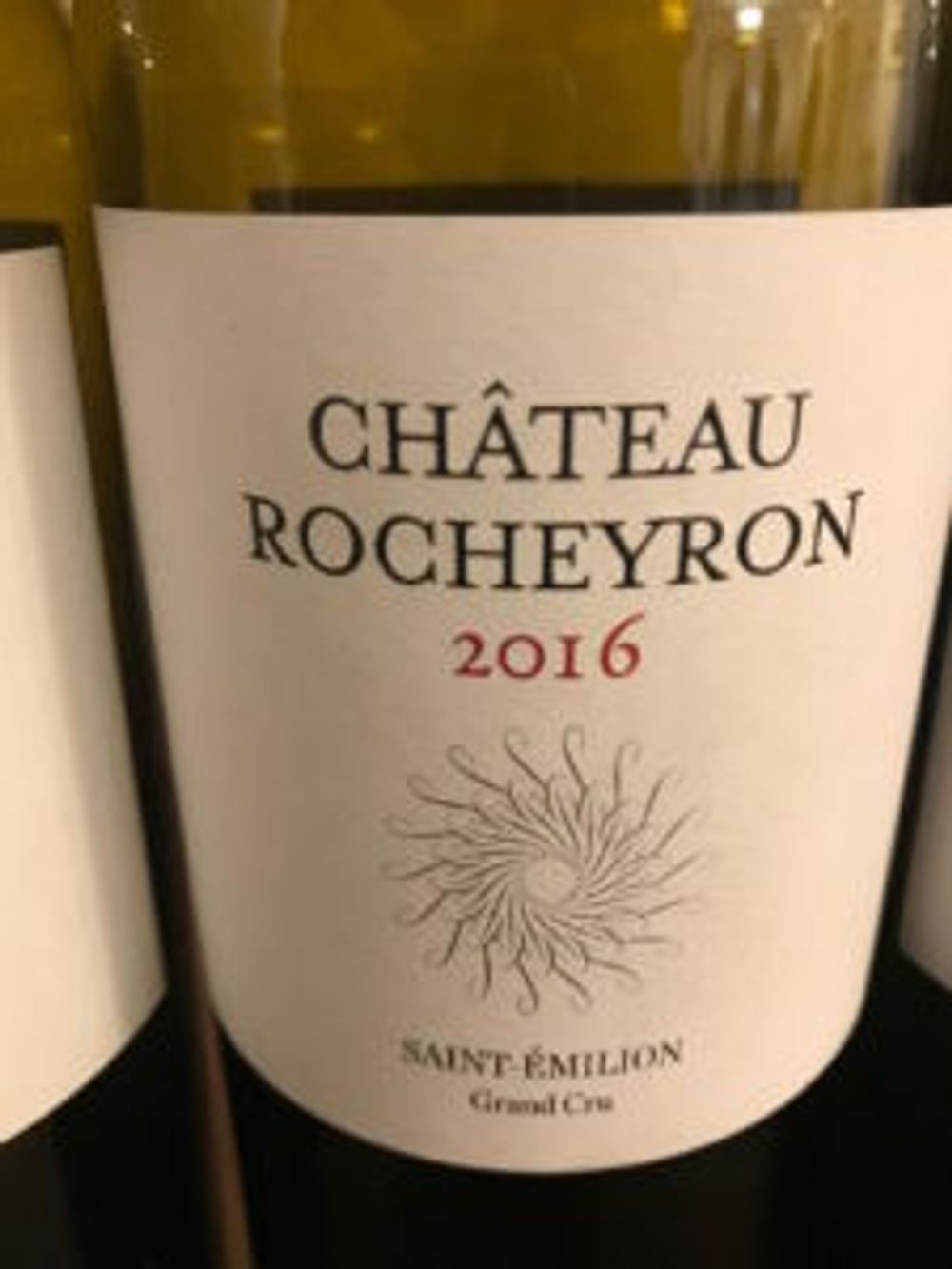
Great balance – good ripeness and firm acidity – lovely and rounded, although still too young. “This was a very good year – similar to 2010 – there were no raisiny grapes which is a good sign of the roots of the vineyard going deep enough – not so influenced by drought and rain.”
Château Rocheyron 2017, Saint-Émilion
Chalkier, tannins are harsher and more textured, but it has great mouthfeel.
“Even though we had low yields the wine is a good indication of our terroir. It was a complicated vintage and very pleased with the result – not the biggest and not an imposing wine but such fantastic balance. Bottled in July, it has good weight but it’s weightless at the same time.”
Château Rocheyron 2018, Saint-Émilion
Very young with primary fruit and a marked woody character which will dissipate with time. Impressive balance and harmony, showing the consistency of the terroir.
“Jane Anson from Decanter tried this and said that it was one of the top 20 wines in Bordeaux. “Not sure it is but thanks very much!”
Which wines to buy?
If I was buying these wines for personal consumption I would buy the 2012 for drinking now. The others in order of preference would be 2016, 2018, 2015, 2014, 2017.
Château Rocheyron wines are imported by Corney & Barrow. Corney & Barrow is a supplier partner of The Buyer – you can learn more about them here.



